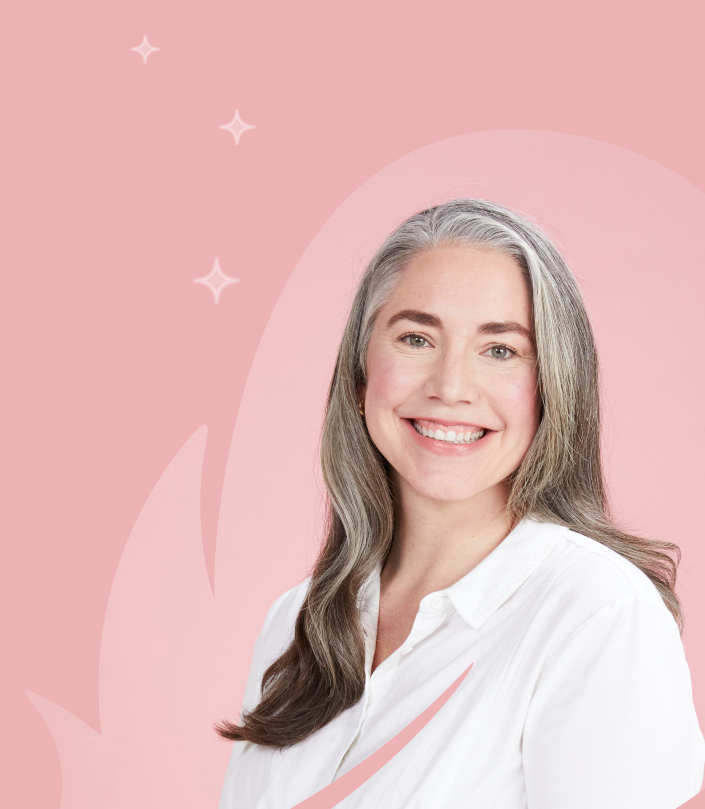Your chance of pregnancy right after your period ends depends on a few factors. A medical expert explains how to figure out whether your period and fertile window overlap.
-
Tracking cycle
-
Getting pregnant
-
Pregnancy
-
Help Center
-
Flo for Partners
-
Anonymous Mode
-
Flo app reviews
-
Flo Premium New
-
Secret Chats New
-
Symptom Checker New
-
Your cycle
-
Health 360°
-
Getting pregnant
-
Pregnancy
-
Being a mom
-
LGBTQ+
-
Quizzes
-
Ovulation calculator
-
hCG calculator
-
Pregnancy test calculator
-
Menstrual cycle calculator
-
Period calculator
-
Implantation calculator
-
Pregnancy weeks to months calculator
-
Pregnancy due date calculator
-
IVF and FET due date calculator
-
Due date calculator by ultrasound
-
Medical Affairs
-
Science & Research
-
Pass It On Project New
-
Privacy Portal
-
Press Center
-
Flo Accuracy
-
Careers
-
Contact Us
Can you get pregnant right after your period ends?


Every piece of content at Flo Health adheres to the highest editorial standards for language, style, and medical accuracy. To learn what we do to deliver the best health and lifestyle insights to you, check out our content review principles.
If you’re trying to get pregnant, you’ll probably want to know which days of your menstrual cycle you can conceive. Technically, you could get pregnant on any day of your cycle, but it all depends on when you ovulate (release an egg). When it comes to getting pregnant right after your period, a few factors would have to line up to make it possible.
Here, Dr. Sara Twogood, obstetrician and gynecologist, Cedars-Sinai Medical Group, California, US, explains how to determine whether it’s likely you’d be able to get pregnant soon after — or during — your period.
Key takeaways: Can you get pregnant right after your period?
- Yes, it is possible to get pregnant if you have unprotected sex right after your period, but it totally depends on your cycle and period length.
- If you have a shorter-than-average cycle (less than 28 days), there’s a chance that your period and your fertile window (the six days around ovulation each cycle when you can get pregnant) may overlap.
- It’s difficult to predict your exact day of ovulation, so if you’re trying to get pregnant, experts suggest you have unprotected sex every other day during your fertile window.
- If you’re trying to conceive, it’s important to know where you are in your cycle. The Flo app allows you to log your cycles and symptoms, helping you get to know your body’s fertility signals.
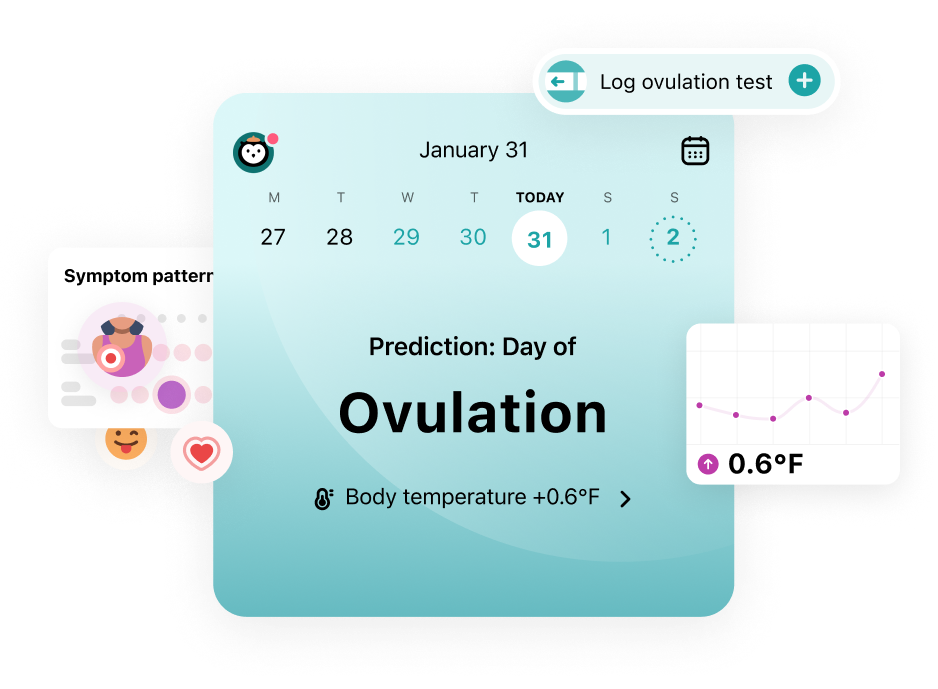
 Over
7.8M
ratings averaging
4.8/5
*
Over
7.8M
ratings averaging
4.8/5
*
Understand your fertility better with the Flo app
- Learn more about your fertility signals
- Improve ovulation predictions by tracking temperature via Apple Watch
- Log your ovulation test results
 Over
7.8M
ratings averaging
4.8/5
*
Over
7.8M
ratings averaging
4.8/5
*
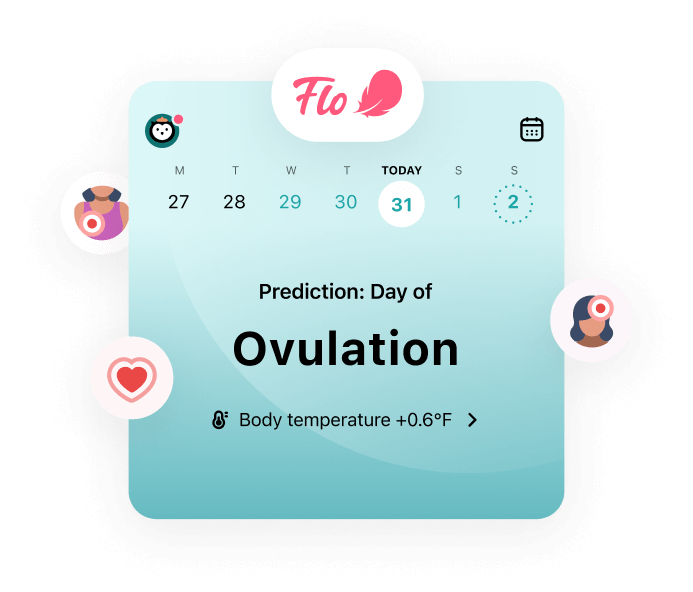
Trying to conceive?
The Flo app can help you better understand your fertility

 Over
7.8M
ratings averaging
4.8/5
*
Over
7.8M
ratings averaging
4.8/5
*
Understand your fertility better with the Flo app
- Learn more about your fertility signals
- Improve ovulation predictions by tracking temperature via Apple Watch
- Log your ovulation test results
Can you ovulate (and get pregnant) right after your period ends? Explaining the science
In an average cycle, the fertile window falls roughly mid-cycle, meaning it doesn’t often overlap with your period, which happens at the start. However, not everyone has the pattern of an average cycle. And so — in some circumstances — it can be possible to get pregnant right after your period. If you have a shorter-than-average cycle (less than 28 days) and/or a longer period (six to seven days), it could happen.
If this sounds like your cycle, it might be useful to know that it doesn’t mean it’s abnormal. In fact, a cycle that ranges anywhere from 21 to 35 days is considered normal, as is a period that lasts up to seven days. If you tend to fall outside of these parameters, it’s a good idea to chat with your doctor, as you may have an irregular cycle.
But let’s go back to how it could be possible to get pregnant shortly after your period. Dr. Twogood breaks down the science: “Most people ovulate about [14 days] before their next period, and the fertile window includes the five days before ovulation (because sperm can stay alive within the female reproductive tract for up to five days),” she says.
Take a quiz
Find out what you can do with our Health Assistant
So, if you’re not using contraception, you can use some basic math to figure out if getting pregnant right after your period will be possible for you. Dr. Twogood uses someone with a 25-day cycle as an example. “Ovulation would typically occur on day 11 (14 days before their period comes). The fertile window starts five days before ovulation, meaning the fertile window starts on day six,” she explains. “For someone who has a six- or seven-day long period, the end of their period correlates with the start of their fertile window — meaning they can get pregnant right after their period.” By this logic, you could even get pregnant on your period.
The timing of ovulation can be tricky to predict, especially if you have irregular periods. And even if you don’t, it’s perfectly normal for ovulation to fall on a different cycle day from month to month. That’s why, if you’re hoping to get pregnant, you should try to make sure there’s always sperm ready to fertilize the egg when ovulation does happen. To do this, experts recommend that you have unprotected sex every other day during your fertile window or every two to three days throughout your whole cycle.
If you do this, how long should it take to get pregnant? One study found that the majority of couples under 35 get pregnant within a year. If it doesn’t happen within that time frame, it’s a good idea to see a doctor. If you’re over the age of 35, then you could schedule an appointment sooner, after six months of trying. If you’re finding it stressful trying to conceive, try sharing how you’re feeling. Chat with your partner, friends, or family, or you could find support from like-minded people in Flo’s Secret Chats space.
Menstrual cycle phases: When are you fertile during your cycle?
You’re most likely to get pregnant during your fertile window, which is six days long. It includes the five days before you ovulate and up to 24 hours after ovulation (because that’s the maximum amount of time your egg will survive without being fertilized). More specifically, your highest chance of conceiving is by having sex in the day or two before ovulation. But before you figure out when your fertile window is, it helps to understand what’s happening during the two phases of your menstrual cycle: the follicular and luteal phases. These are divided by ovulation and driven by the rise and fall of different sex hormones.

Remember: The first day of your cycle is when your period begins. The last day is the day before your next period. You can make a note of these key cycle days and the symptoms you experience using Flo’s period-tracking app.
Follicular phase
The follicular phase starts on day one of your cycle (the first day of your period) and ends with ovulation, meaning the fertile window takes place in this part of your cycle. How long this phase lasts differs for everyone, depending on your cycle length. For someone with an average 28-day cycle, the follicular phase is days one to 14, with ovulation happening on day 14.
During this time, a hormone called follicle-stimulating hormone (FSH) is released, sending a signal to the follicles in your ovaries. “These follicles contain immature eggs, and this follicular stimulation helps mature the eggs,” says Dr. Twogood. Multiple eggs start to mature, but typically, just one becomes “dominant” enough to eventually get released at ovulation.
“Once a mature egg is ready, FSH stops production. Luteinizing hormone (LH) then surges,” explains Dr. Twogood, adding that “LH is the signal for the egg to ovulate.”
Luteal phase
The luteal phase starts after ovulation and lasts until the day before your next period. It’s usually 14 days long, no matter how long your cycle is. That means for someone with an average 28-day cycle, the luteal phase is days 15 to 28.
“The luteal phase’s job is essentially to get and stay pregnant,” Dr. Twogood says. “[The hormone] estrogen starts slowly decreasing (compared to the follicular phase), and progesterone becomes the dominant hormone. Progesterone helps ‘organize’ the inside lining of the uterus, preparing it for a possible pregnancy,” she explains. If you don’t get pregnant, your hormone levels drop, and you shed your uterine lining, which is what you know to be your period.
Understanding your fertile window
If you’re trying to get pregnant, it’s vital to know about your fertile window, also known as the fertile days in your cycle. It’s useful to know that the fertile window is around six days long, but how do you figure out exactly when it will be?
Learning when you’re fertile is also known as the fertility awareness method or family planning. It’s done by tracking your periods, which helps you start to get familiar with your cycle patterns and your body’s fertility signals. “[It] can help you find normal, small variations between timing of cycles (such as a period coming every 28 to 30 days). From there, ovulation is predicted to occur 14 days before the predicted next period,” says Dr. Twogood. “But,” she warns, “there’s no 100% way to know ovulation has occurred.” That’s because normal changes in your cycle mean ovulation can shift a bit from month to month, even in regular cycles.
Using another form of ovulation tracking alongside logging your cycle can give you a firmer idea of when you release an egg each month. Dr. Twogood recommends ovulation prediction kits, which measure levels of LH in your pee, as these typically rise shortly before you release an egg.
Another suggestion for tracking your ovulation is monitoring your cervical mucus, which becomes clear, wet, and slippery around the time of ovulation, a bit like raw egg white.
Basal body temperature (BBT) monitoring is another way to track your ovulation. Your temperature at rest — known as your basal body temperature — increases slightly after you ovulate by around 0.5ºF (0.3ºC). If you track your BBT regularly using a digital thermometer or wearable technology, you may be able to spot the rise. Be aware, though, that this method can’t tell you in advance when you’re about to ovulate, only afterward.
If you have irregular periods, your ovulation may be a little unpredictable, or you may possibly have no ovulation at all. “I recommend anyone trying to conceive with an irregular cycle check in with their [doctor] for more evaluation,” Dr. Twogood advises.
How soon can I take a pregnancy test?
We know the two-week wait between ovulation and taking a pregnancy test can feel like a lifetime if you’re hoping to get pregnant. But there’s a good reason you’re advised to wait a while before you test.
Pregnancy tests work by checking your urine for traces of a hormone called human chorionic gonadotropin (hCG). The higher the hCG levels, the more likely the test will detect it. So, if you’re wondering when to take a pregnancy test, here is Dr. Twogood’s expert advice. “Some pregnancy tests are accurate before a missed period, and I know it’s tempting to take a test early. However, to get an accurate result and allow time for hCG levels to build (and also save money because pregnancy tests can be expensive!), it’s best practice to wait until the day the period is expected but doesn’t come.”

If you have a cycle length that’s slightly longer than average, such as a 29- to 31-day cycle, she recommends assuming the cycle is longer and waiting until day 31 to test. If you’re unsure, a pregnancy test calculator can be a useful guide on when a test will be most accurate.
Dr. Twogood adds, “If the test is negative but a period still doesn’t come, I recommend taking another test in two days. The first test may have been a false negative due to taking it too early.” And if the test is positive? “There’s no need to retake the test to ‘make sure,’” she says.
What are the earliest signs of pregnancy?
Just as every person is different, so is every pregnancy. That means there’s no set pattern of symptoms you’re guaranteed to notice. Some people will see the signs early on, while some may develop them as the weeks go on. And others don’t get any obvious symptoms at all.
That said, it’s useful to know what some of the common very early signs of pregnancy are. They include nausea, fatigue, breast tenderness, and an increased need to pee. Some people also notice implantation spotting or bleeding, which doesn’t happen in every pregnancy. But if it does, it can be perfectly normal, happening around 10 to 14 days after conception when the embryo implants itself into the wall of the uterus.
As many of the early signs of pregnancy are similar to premenstrual syndrome (PMS) symptoms, it can be difficult to tell the two apart. “This is a good reason to track your PMS symptoms, so you get to know what is normal for you and can identify a change when trying to get pregnant,” Dr. Twogood says. You can use an app like Flo to track your symptoms as well as your cycle dates.
Frequently asked questions about getting pregnant right after your period ends
Can you get pregnant five days after your period?
Yes, it’s very possible that you could get pregnant five days after your period. A typical period lasts two to seven days. So, on that basis, five days after your period would land you somewhere between days seven and 12 of your cycle. In an average cycle, ovulation happens somewhere around day 14, and the shorter the cycle, the earlier ovulation takes place. Remembering that you can theoretically get pregnant on any day of your fertile window — and that your fertile window starts five days before ovulation — it is possible that having unprotected sex five days after your period could lead to pregnancy. Has all the math left you confused? Logging your cycle dates in a period-tracking app like Flo might make it feel a little clearer.
When is the least likely time to get pregnant?
“The least likely time to get pregnant is about a week after ovulation,” Dr. Twogood says. “Although, this, of course, depends on someone tracking their periods and having a normal, reliable cycle.”
Can you get pregnant on the last day of your period?
It’s less likely, but you could conceive on the final day of your period — particularly if you have a shorter-than-average cycle (less than 28 days) and a period that lasts six or seven days. This is because during a cycle of this length, your period can overlap with your fertile window.
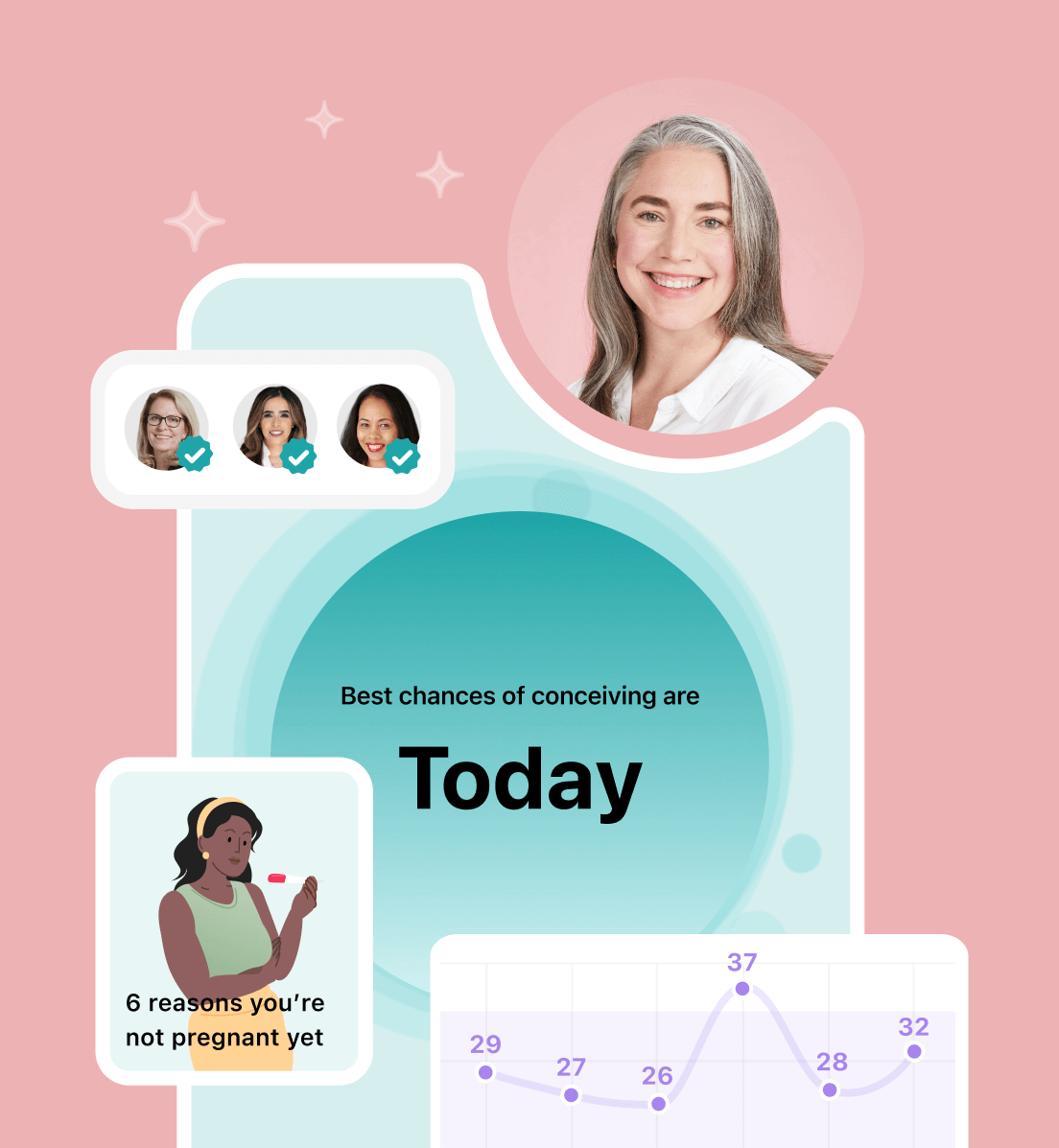
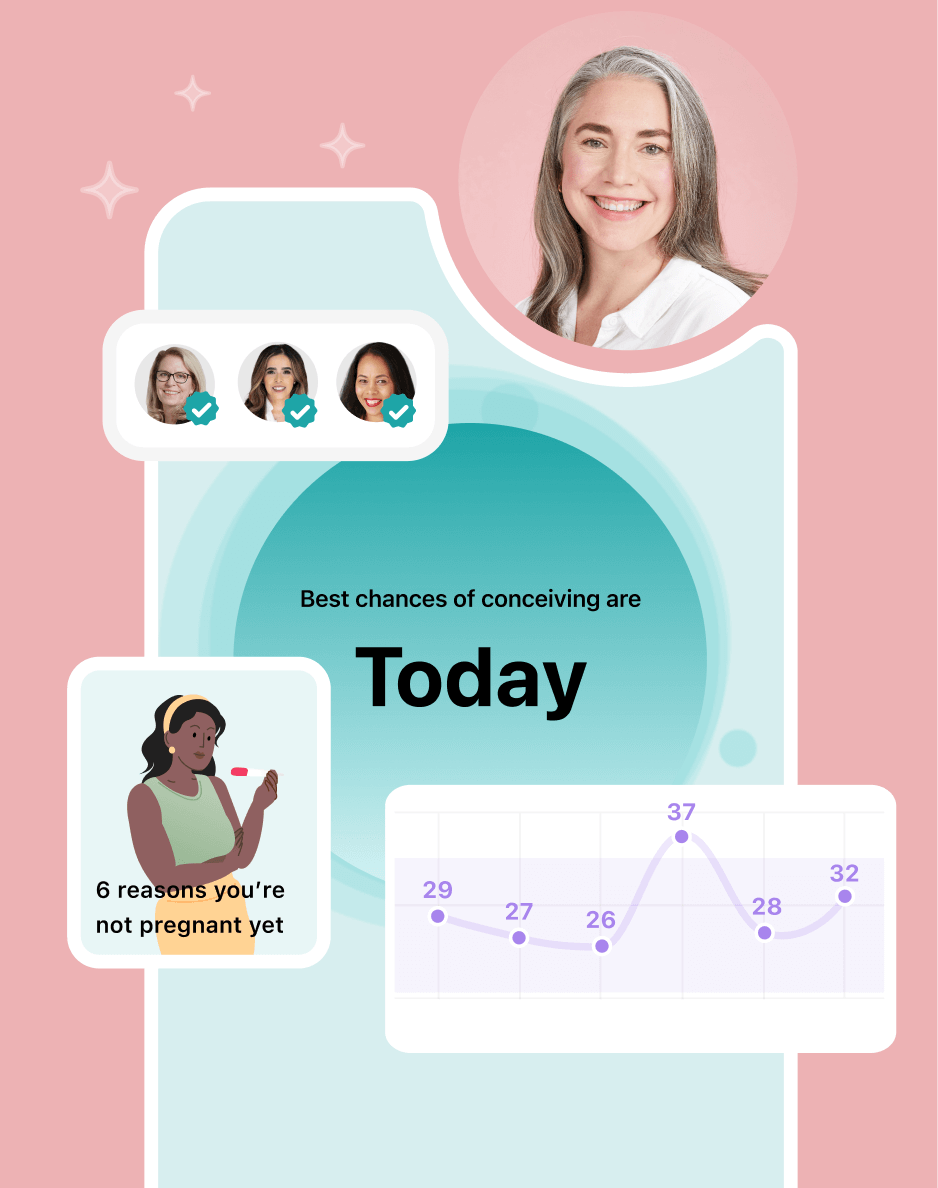
Hey, I'm Anique
I started using Flo app to track my period and ovulation because we wanted to have a baby.
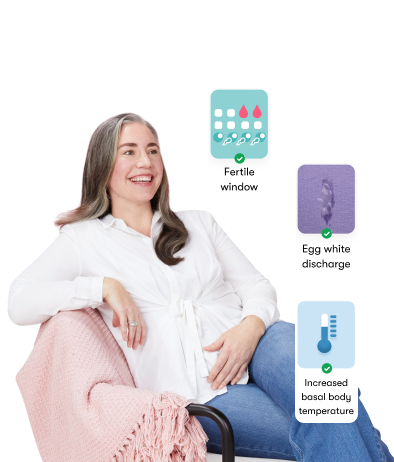
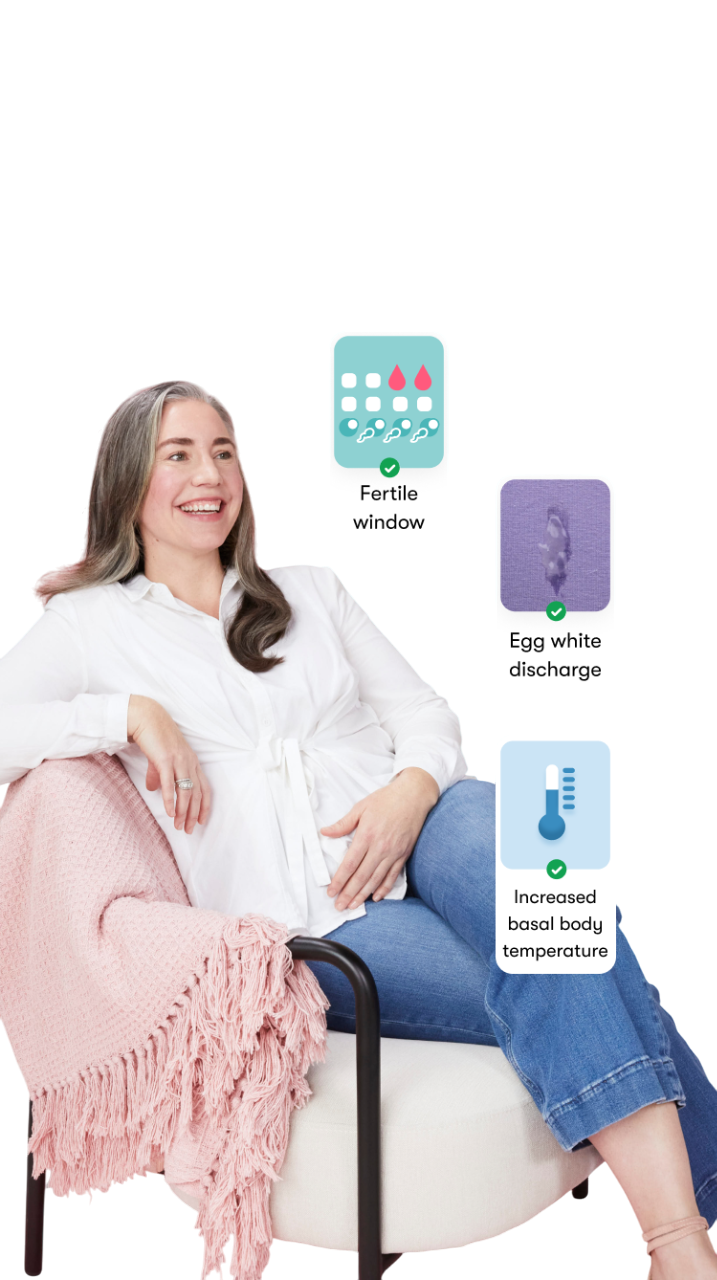
The Flo app helped me learn about my body and spot ovulation signs during our conception journey.
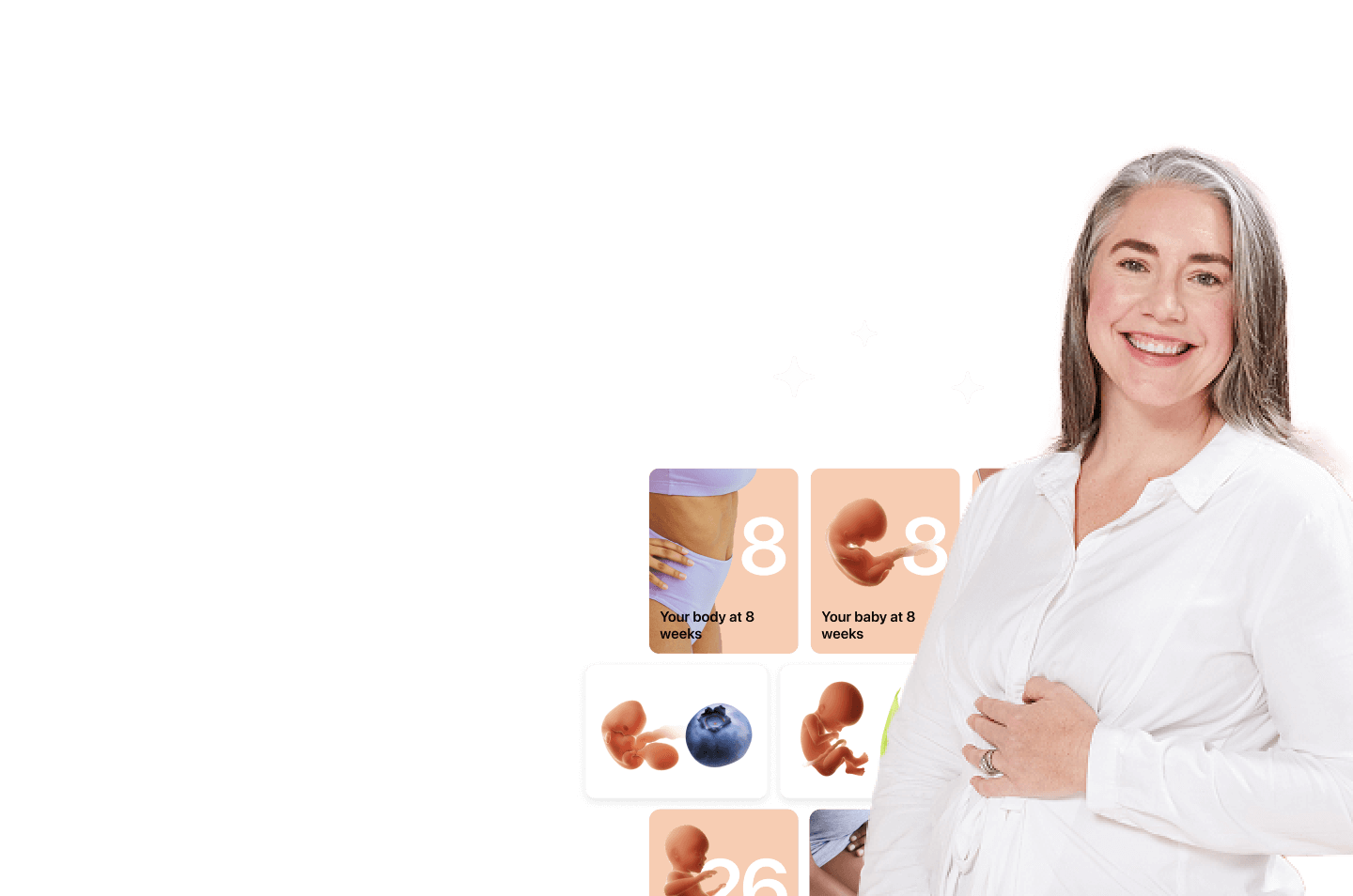
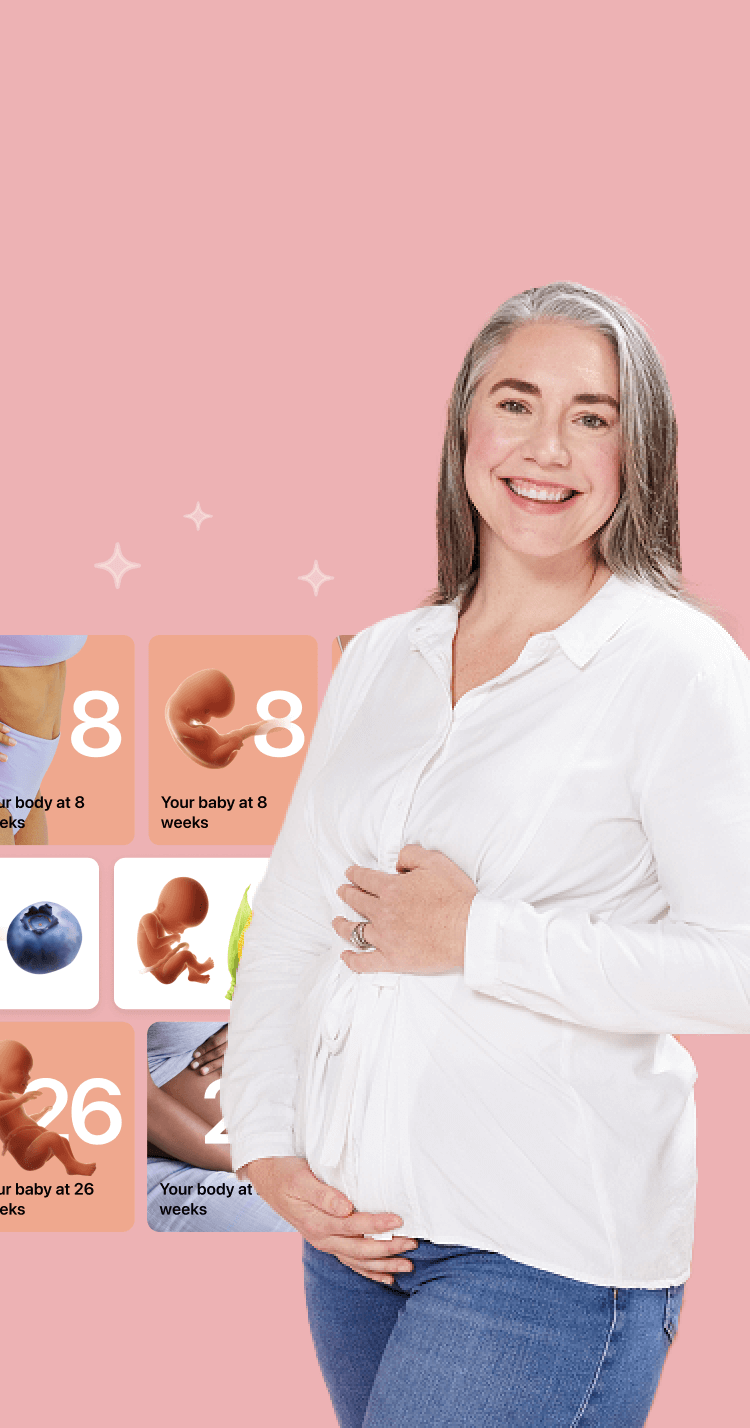
I vividly
remember the day
that we switched
Flo into
Pregnancy Mode — it was
such a special
moment.
Real stories, real results
Learn how the Flo app became an amazing cheerleader for us on our conception journey.
References
“Abnormal Uterine Bleeding.” The American College of Obstetricians and Gynecologists, Dec. 2021, www.acog.org/womens-health/faqs/abnormal-uterine-bleeding.
“Am I Pregnant?” Cleveland Clinic, my.clevelandclinic.org/health/articles/9709-pregnancy-am-i-pregnant. Accessed 12 July 2022.
Faust, Louis, et al. “Findings from a Mobile Application-Based Cohort Are Consistent with Established Knowledge of the Menstrual Cycle, Fertile Window, and Conception.” Fertility and Sterility, vol. 112, no. 3, Sep. 2019, pp. 450–57.e3, doi: 10.1016/j.fertnstert.2019.05.008.
“Follicular Phase.” Cleveland Clinic, my.clevelandclinic.org/health/body/23953-follicular-phase. Accessed 5 Sep. 2024.
“Having a Baby after Age 35: How Aging Affects Fertility and Pregnancy.” The American College of Obstetricians and Gynecologists, Feb. 2023, www.acog.org/womens-health/faqs/having-a-baby-after-age-35-how-aging-affects-fertility-and-pregnancy.
“Heavy and Abnormal Periods.” The American College of Obstetricians and Gynecologists, Oct. 2020, www.acog.org/womens-health/faqs/heavy-and-abnormal-periods.
“How Long Does It Usually Take to Get Pregnant?” NHS, www.nhs.uk/pregnancy/trying-for-a-baby/how-long-it-takes-to-get-pregnant/. Accessed 6 Feb. 2025.
“Is Implantation Bleeding Common in Early Pregnancy?” Mayo Clinic, 19 Apr. 2022, www.mayoclinic.org/healthy-lifestyle/pregnancy-week-by-week/expert-answers/implantation-bleeding/faq-20058257.
“Luteal Phase.” Cleveland Clinic, my.clevelandclinic.org/health/articles/24417-luteal-phase. Accessed 5 Sep. 2024.
“Menstrual Cycle.” Cleveland Clinic, my.clevelandclinic.org/health/articles/10132-menstrual-cycle. Accessed 4 June 2024.
Ogle, Alicia. “Using Ovulation Tools to Predict Fertility.” Mayo Clinic Health System, 13 June 2023, www.mayoclinichealthsystem.org/hometown-health/speaking-of-health/using-ovulation-kits-to-predict-fertility.
“Optimizing Natural Fertility: A Committee Opinion (2022).” American Society for Reproductive Medicine, 2021, www.asrm.org/practice-guidance/practice-committee-documents/optimizing-natural-fertility-a-committee-opinion-2021/.
“Ovulation.” Cleveland Clinic, my.clevelandclinic.org/health/articles/23439-ovulation. Accessed 17 Feb. 2023.
“Periods and Fertility in the Menstrual Cycle.” NHS, www.nhs.uk/conditions/periods/fertility-in-the-menstrual-cycle/. Accessed 6 Feb. 2025.
“Pregnancy: Identifying Fertile Days.” MedlinePlus, medlineplus.gov/ency/article/007015.htm. Accessed 26 Sep. 2022.
“Pregnancy Tests.” Cleveland Clinic, my.clevelandclinic.org/health/diagnostics/9703-pregnancy-tests.
“Session 24: Ovulation and Fecundity.” Human Reproduction, vol. 25, suppl. 1, 1 June 2010, pp. i37–i38, https://doi.org/10.1093/humrep/de.25.s1.24.
Thiyagarajan, Dhanalakshmi K., et al. “Physiology, Menstrual Cycle.” StatPearls, StatPearls Publishing, 27 Sep. 2024, www.ncbi.nlm.nih.gov/books/NBK500020/.
Wilcox, A. J., et al. “The Timing of the ‘Fertile Window’ in the Menstrual Cycle: Day Specific Estimates from a Prospective Study.” BMJ, vol. 321, no. 7271, Nov. 2000, pp. 1259–62, doi:10.1136/bmj.321.7271.1259.
Witt, Barry. “Trying to Get Pregnant? Here’s When to Have Sex.” The American College of Obstetricians and Gynecologists, Aug. 2023, www.acog.org/womens-health/experts-and-stories/the-latest/trying-to-get-pregnant-heres-when-to-have-sex.
History of updates
Current version (13 February 2025)
Published (12 February 2025)
In this article
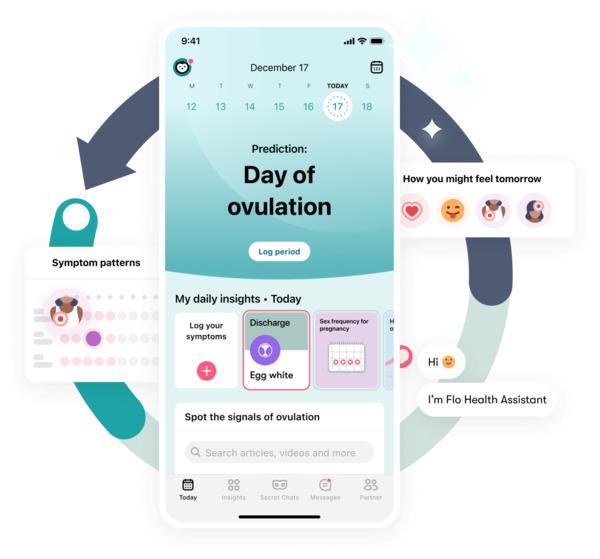
Get your personal guide to fertility
-
Learn how to read your body's ovulation signals
-
Find daily conception tips from our experts
-
Chat with others who are trying to get pregnant



